Buggy vs. Truggy: Exploring the Competitive World of RC Racing
In the dynamic world of RC racing, two chassis types have reigned supreme for decades: the buggy and the truggy. These two classes have a rich history, each with its own unique characteristics and benefits. Let's dive into the origins and evolution of the iconic buggy.
The Evolution of Buggies: From Humble Beginnings to Racing Dominance
The RC Buggy has a long tradition when it comes to remotecontrolled model cars. Today, most racers prefer the RC buggyin the off-road, all-wheel drive (4WD) version. The buggy's story can be traced back to the 1980s, where the Kyosho Vanning 8-scale buggy paved the way for a new era in off-road RC cars. Prior to the Vanning, most 8-scale off-road vehicles were essentially on-road cars on stilts, with less-than-desirable performance. The Vanning marked a significant step forward, but it still lacked the refinement and handling that racers craved.
The breakthrough came in 1987 when Kyosho designer Yuichi Kanai introduced the revolutionary Burns buggy. This design incorporated key elements that would become the foundation for modern 8-scale buggies: durable and reliable injection-molded plastics, a metal-and-aluminum chassis, a shaft-driven 4WD system, and a mid-mounted engine. The Burns' layout has been emulated by virtually every successful 8-scale nitro buggy since then, cementing its status as a landmark in the sport's history.
As the years passed, the buggy class continued to evolve, with the advent of brushless systems and e-bug conversions further expanding the options for racers. The buggy's reputation as the premier class for both nitro and electric propulsion systems has solidified its place as the go-to choice for those seeking the ultimate in speed and prestige.
Buggies: The Thrill of the Challenge
Buggies, both nitro and electric, are the pinnacle of 8-scale RC racing. Their inherent quickness and challenging handling make them the ultimate test of a driver's skill. For those seeking the glory that comes with winning in a prestigious class, the buggy is the clear choice.
One of the key benefits of the buggy is its relatively lower cost compared to its truggy counterpart. Not only are the initial kit prices more affordable, but the cost of spare parts like arms, drive shafts, wheels, and tires is generally lower as well. Additionally, buggies are known to withstand more abuse due to their shorter arms, reducing the leverage in a crash.
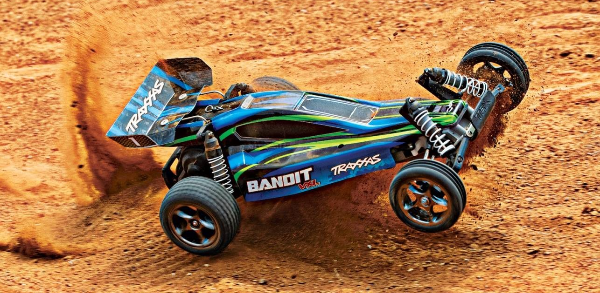
However, the buggy's agility and responsiveness come with a trade-off. These machines can be tricky to drive, especially if the setup is not dialed in or the driver is having an off day. Mastering the buggy's handling requires a significant investment of time and skill, making it a true test of a racer's abilities.
Another consideration is the cost of maintaining a buggy. While the initial purchase may be more budget-friendly, the faster wear of buggy tires means that racers will likely spend more on replacement rubber in the long run. It's a trade-off that must be weighed carefully.
Despite these challenges, the buggy's enduring popularity and dominance in the RC racing scene are a testament to its allure. For those seeking the ultimate in speed, performance, and the thrill of the challenge, the buggy remains the quintessential choice.
Truggy: The Easier Path to Success
Emerging as a counterpart to the buggy, the truggy has carved out its own niche in the world of RC racing. While buggies have been around for decades, the truggy's origins are a bit more convoluted, with its roots tracing back to various buggy-based monster truck conversions.
The truggy, as we know it today, can be best described as an enlarged buggy in every sense. Longer, wider, and heavier than their buggy counterparts, truggies offer a distinctly different driving experience. Think of the difference between a 2WD 10-scale buggy and a 2WD stadium truck – the truggy is the larger, more forgiving sibling.
The primary advantage of the truggy is its ease of use. Whereas buggies can be finicky and require extensive tuning to achieve optimal performance, truggies can often be run with a stock setup and perform admirably on a wide range of tracks. This makes them an appealing choice for those looking to get into RC racing without the steep learning curve.
Another benefit of the truggy is the longevity of its tires. Compared to the faster-wearing buggy tires, truggy tires tend to last significantly longer, potentially saving racers money in the long run. This can be a crucial consideration for those on a tighter budget.
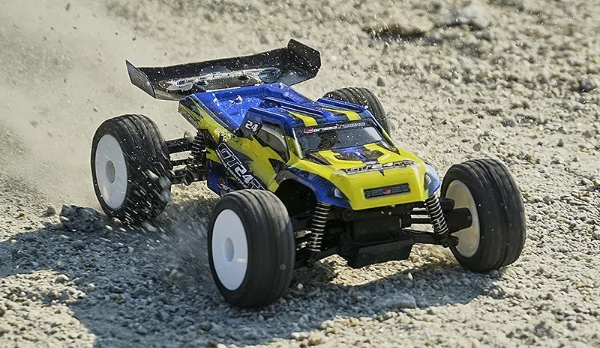
However, the truggy's ease of use comes with a trade-off. These larger, heavier machines are generally more expensive to get up and running, with the need for stronger motors and other components to handle the increased size and weight. Additionally, the truggy's popularity is not as widespread outside of the United States, which can be a consideration for those in other regions.
One of the more controversial aspects of the truggy class is the ongoing debate surrounding its identity. As manufacturers have sought to improve the truggy's performance, some have argued that the vehicles have strayed too far from their original truck-like aesthetics, blurring the lines between truggies and buggies. This "identity crisis" has sparked discussions within the RC community.
Ultimately, the choice between a buggy and a truggy comes down to personal preference and the specific needs of the racer. For those seeking a more forgiving and easier-to-drive platform, the truggy may be the better fit. But for those who crave the ultimate challenge and the prestige that comes with mastering the buggy, the decision is clear.
Buggy vs. Truggy: Which One to Choose?
Despite having the same power system, the buggy has a significant advantage in terms of power-to-weight ratio. Being much lighter than the truggy, the buggy will have incredible acceleration and agility. However, the truggy's larger size, bigger wheels, and longer shock travel provide it with greater stability, especially on the bumpy surface of the track. The buggy's low center of gravity also contributes to its impressive handling and turning ability. So, while the truggy may have the edge in terms of stability, the buggy's speed and agility could give it the upper hand on the track.
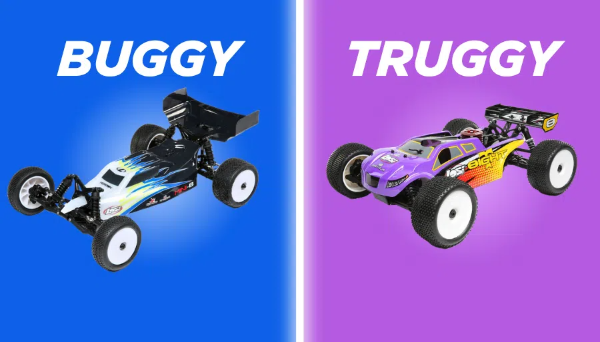
The Stable and Powerful Truggy
When it comes to choosing between a buggy and a truggy, there are several factors to consider. The truggy, with its wider stance and larger size, offers a more stable and controlled ride. Thanks to its wider base, the truggy is less prone to swerving or tipping over, even at high speeds or during jumps. This stability makes the truggy a great choice for those who prioritize handling and performance over pure top-end speed.
The Agile and Fast Buggy
On the other hand, the buggy's smaller size and narrower stance give it an advantage in tight turns and quick maneuverability. Its agility makes it an excellent choice for track-based racing, where a nimble vehicle that can navigate tight corners is crucial. Buggies are often favored by those who enjoy the thrill of high-speed cornering and the ability to make sharp, responsive turns.
Balancing Speed and Handling
One key difference between the two is their top speed capabilities. Due to their larger size and greater weight, truggies generally have a lower top speed compared to buggies. This is because the additional weight of the truggy can limit its acceleration and top-end velocity. Conversely, the lighter weight of the buggy allows it to achieve higher top speeds, making it the preferred choice for those who prioritize pure speed over handling.
Durability and Maintenance
Both buggies and truggies are known for their durability, but there are some differences to consider. The larger components and wider stance of the truggy may make it slightly more resilient to impacts and rough terrain. Additionally, the larger parts of a truggy, such as the shocks and shock towers, can be easier to maintain and replace compared to the smaller components found in a buggy.
Choosing the Right RC Vehicle
Ultimately, the choice between a buggy and a truggy comes down to personal preference and the specific needs of the user. If you value handling and stability over top-end speed, the truggy may be the better option. Conversely, if you prioritize agility and high-speed cornering, the buggy could be the ideal choice. It's important to consider your local terrain, the type of racing or driving you enjoy, and your personal preferences to determine which RC vehicle will best suit your needs.
Both buggies and truggies offer unique advantages and are excellent choices for RC enthusiasts. By understanding the key differences between these two vehicle types, you can make an informed decision and find the perfect RC vehicle to suit your driving style and preferences. Whether you're a seasoned racer or a casual hobbyist, there's a buggy or truggy out there that will provide you with hours of thrilling and enjoyable RC experiences.
Conclusion: Embracing the Diversity of RC Racing
In the dynamic world of RC racing, the buggy and the truggy have each carved out their own unique place, catering to the diverse needs and preferences of racers. Whether you're drawn to the thrill of the buggy's agility and responsiveness or the ease of use and longevity of the truggy, both classes offer a wealth of opportunities for excitement and personal growth. As you embark on your RC racing journey, consider the merits of each class and choose the one that best aligns with your goals, budget, and driving style. Embrace the diversity that these two chassis types offer, and you'll be sure to find a rewarding and fulfilling experience in the world of RC racing. As a global leading lipo battery manufacturer, Grepow offers professional standard and customizable RC Car battery solutions to meet the needs of all knids of consumer and industrial applications. If you have any questions or needs, please feel free to contact us at info@grepow.com.
Related Articles
-

Powering Drone Soccer: High-Performance Batteries Take Flight in Singapore
2025-07-23 -
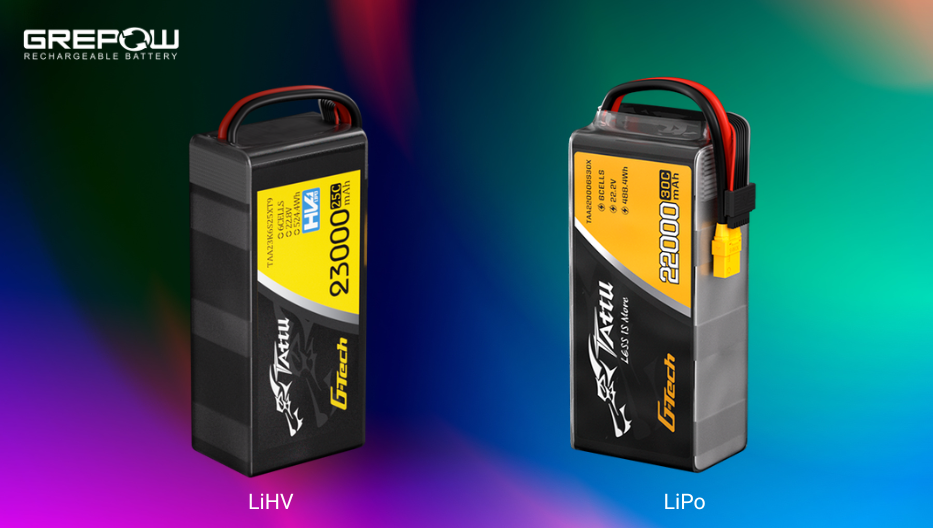
LiPo battery vs LiHV battery: what’s the difference?
2025-07-16 -
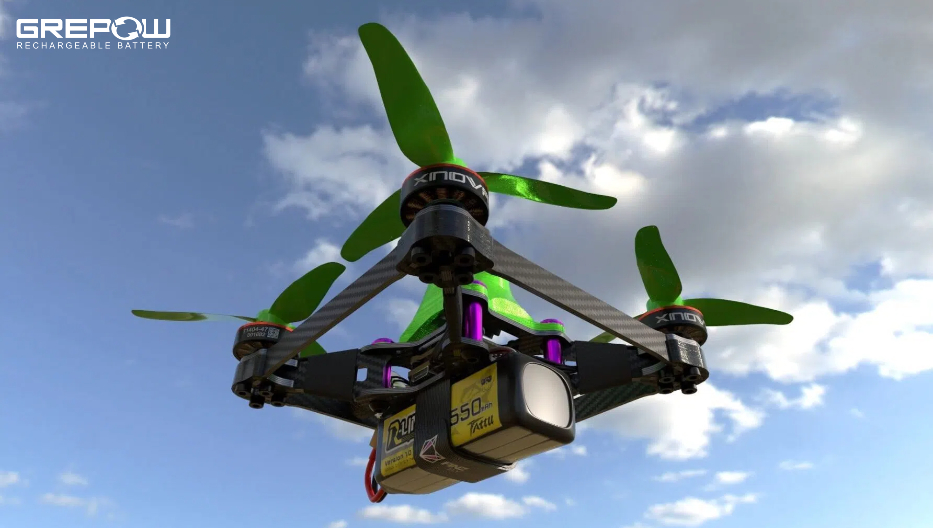
Building an FPV Drone: A Deep Dive into the Technology
2025-06-30
Related products
-
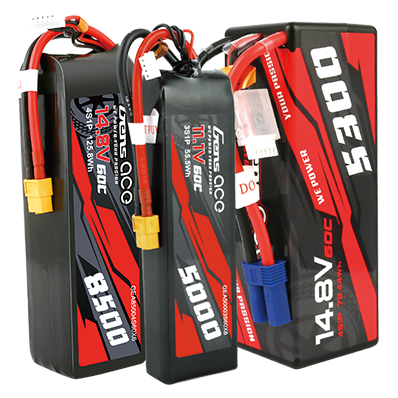
Grepow Gens ace Classic Series RC Car Battery Pack
-
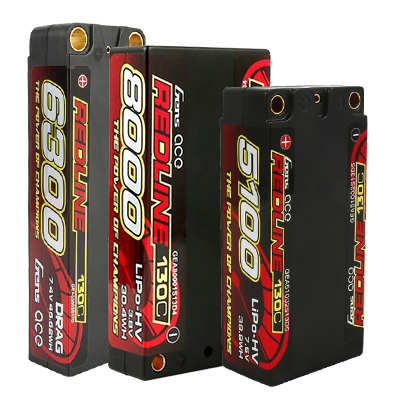
Grepow Gens ace Redline 1.0 Series RC Car Battery Pack
-
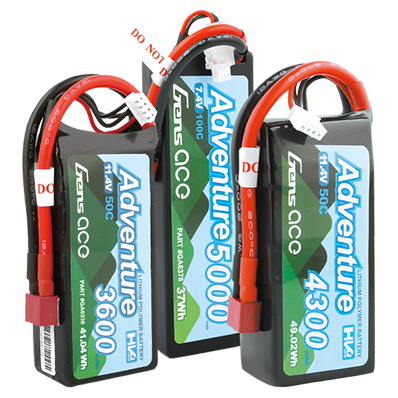
Grepow Gens ace Adventure Series RC Car Battery Pack
-
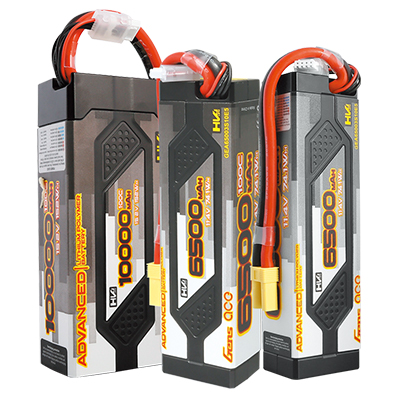
Grepow Gens ace Advanced Series RC Car Battery Pack
-
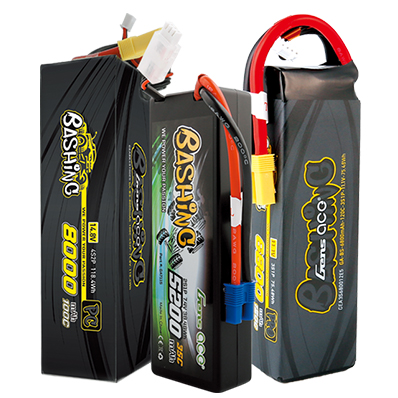
Grepow Gens ace Bashing Series RC Car Battery Pack
-
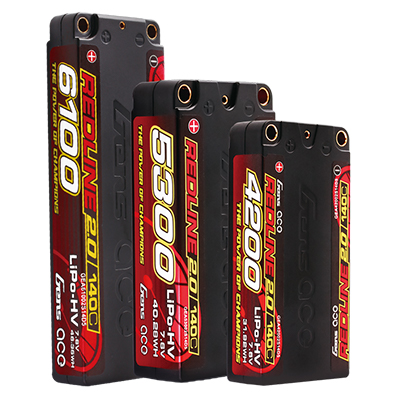
Grepow Gens ace Redline 2.0 Series RC Car Battery Pack
















































